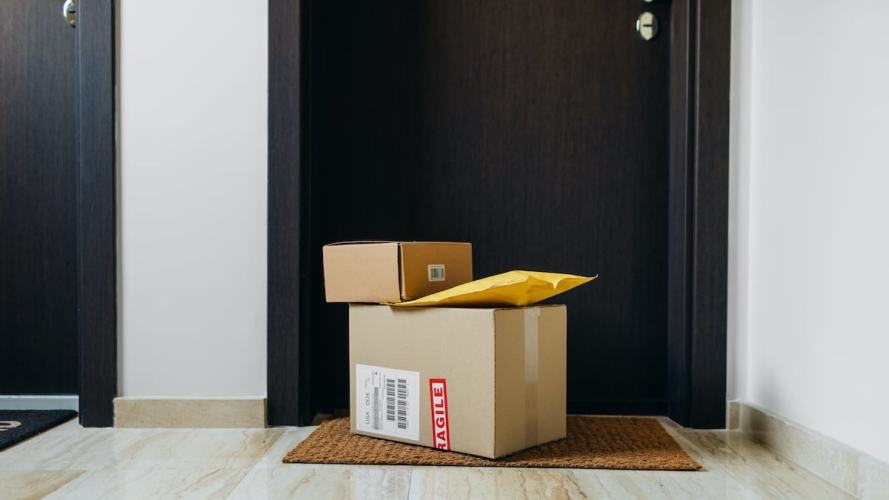6 Order Management Trends Here To Stay



Six new order management trends are shaping shopping in the future. Stay current to keep deliveries accurate and on-time, keep customers happy, and position your company for growth.
Porches and warehouses are dotted with parcels as more consumers and business buyers use ecommerce and portals instead of brick-and-mortar stores and sales reps. From flowers to medication to replacement parts for wind turbines, order management trends have changed. Nearly everything can be delivered — and customers like it that way. But a delayed package or inaccurate delivery data could drive a loyal customer to abandon your brand.
Six new order management trends will shape shopping and business buying forever. With the right tools and strategies, companies can keep deliveries accurate and on-time, keep their customers happy, and position themselves for growth in a digital-first economy.
Order management has changed forever
Learn how you can grow your business and delight customers with a future-proof, scalable system.



1. Digital and physical lines are blurred
Curbside pickup, or click-and-collect, has been popular in categories like grocery and big-box retailing. When in-store shopping became limited, and in some cases, impossible — curbside pickup saved sales for stores. Curbside pickup offers the ease and precision of shopping online with the peace of mind that a shopper will get the items they need on time. It also eases the last-mile fulfillment burden for brands that rely on FedEx, USPS, UPS, and other carriers.
Companies that explored buy-online-pick-up-in-store (BOPIS) or curbside pickup in 2020 experienced a 76% revenue growth compared to the prior year. It has been a proven strategy for preserving sales, using stores as distribution centers, and making in-store inventory available online. This trend allows shoppers to buy the products they love when and how they want to.
2. Order management systems must be built to scale
Brands have learned that they must prepare for the unexpected — demand spikes can happen at any moment, for any reason. With ongoing challenges like supply chain delays and resource constraints, heading into the 2022 holiday season, retail and consumer goods brands must once again prepare for peak demand.
But not all companies have order management practices in place to support the influx of shoppers. The result? Frustrating out-of-stocks, inaccurate inventory counts, and faulty orders — all leading to upset customers. Organizations need scalable systems that can respond to demand that changes in an instant.
Homegrown systems or customized enterprise resource planning systems (ERPs) often carry out order management processes. But the problem is that these solutions get delayed feeds of sales activity, and they certainly aren’t built to scale. As we prepare for peak events — the holidays, sales, the possibility of future lockdown orders — brands must invest in order management for positive shopping experiences.
3. Transparency around delays is essential
Even with order management excellence, disruptions can impact the supply chain and fulfillment, and cause trickle-down delays. Whether delays are in the manufacturing process or the distribution centers, customers experience longer wait times.
How can you become more transparent with your customers and partners? Deploy self-service functionalities. Give shoppers and business buyers the ability to easily check order status online or via app.
- Use bots to collect upfront order details and provide order status for agents so they can efficiently handle cases coming in. This frees agent time to handle more complex cases.
- Empower shoppers with self-service tools to track their order or make simple modifications when delays happen.
- Add a link to an FAQs to help customers find answers fast.
4. Self-service return options can smooth a bumpy process
Convenience is the real MVP of customer experience (most shoppers prioritize it even over brand). In the name of convenience, returns innovation has exploded. Case in point: Consumers can initiate Amazon returns at their local Whole Foods market — without even a box or a shipping label.
Streamlined experiences like these build brand loyalty and delight consumers. B2B buyers ordering products online also expect to self-serve when it comes to returns. If your business provides seamless ordering, you’ll need to make it easy for buyers to return without calling service agents or sales reps.
With self-service capabilities, brands can guide shoppers through returns or exchanges. Or better yet, advise shoppers on new products that will meet their exact needs.
5. Post-purchase expectations have changed
Brands and retailers are enjoying the influx of new online shoppers. Analysts expect digital growth to continue, projecting 266.7 million digital buyers in the US alone by the end of 2022. Online is a preferred option, and new consumer behaviors are taking hold.
As new variants become part of our daily lives, customers will likely continue to turn to ecommerce for safety and convenience. The order management experience is critical. Consumers have come to expect lightning-fast shipping times and complete transparency — even in the face of supply chain issues. With options like same day and last mile delivery options, customer expectations are continuing to evolve.
6. Companies are finding new ways to drive efficiency and productivity
Disconnected systems create unpleasant experiences for customers and businesses. Many companies use disparate systems, which makes it difficult to meet customer expectations and scale their business. For example, it’s typical for businesses to use one system to view customer data and another to locate products. Without one holistic solution and a single source of truth, processes move slower, cross-functional team communication is difficult, and personalized experiences are hard to scale. In order to keep up with growing customer demands, fast uptime is key. And in these times of economic uncertainty, there are many ways to invest more efficiently while growing productivity.
Companies looking to increase efficiencies and keep customer experience number one are looking to all-in-one solutions that combine commerce, order management and payments. This allows for easy scalability, increased speed to market, a better customer experience thanks to that single source of truth, and the opportunity to grow into new global markets with tech that handles things like local payment methods. The ultimate reward from a standalone digital solution? Growth in ROI.
Deliver seamless-purchase experiences
Discover insights from the commissioned Total Economic Impact™ survey. Hear what commerce leaders have to say.




























